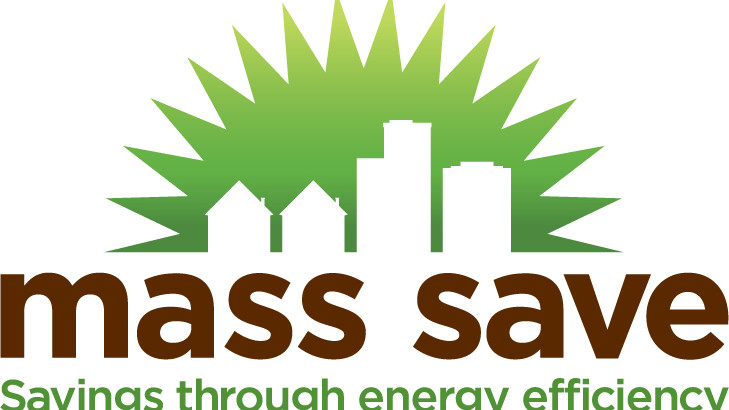Energy Efficiency Audits – What to Expect
Many business owners have begun to think more critically about their energy use these days. But many don’t quite understand what an energy efficiency audit entails. How does it all work? What should I expect? Furthermore, what is the energy efficiency program? What incentives can I receive? Who administers it, and why? These are common questions we encounter frequently, and we’d like to share some information to make more sense of the whole process.
What is the Business Energy Efficiency Program?
The business energy efficiency program is designed help you save money and energy on your lighting and gas bills by retrofitting/upgrading to more energy-efficient equipment. The program is administered by your utility company. Massachusetts residents may be familiar with Mass Save, a program that acts as the umbrella for the entire energy efficiency program across Massachusetts. Utilities such as Berkshire Gas, Blackstone Gas Company, Cape Code Compact, Columbia Gas, Eversource, Liberty Utilities, National Grid, and Unitil all work under the Mass Save Energy Efficiency program.







Small vs. Large Business Energy Efficiency Program
Small and large business programs are determined by the total electric usage of a facility. In Massachusetts, buildings that consume ≤ 300 kW annually are qualified into the small business program. In New Hampshire, buildings that consume ≤ 200 kW are qualified. Anything over 300 kW qualifies into the large business program. As a reference, most businesses that are under 75,000 square feet will fall into the small business program. kW is your demand—the total amount of electricity your building may need at any given time.
Incentives & Rebates
Small and large energy efficiency programs work slightly differently. Below is a breakdown of how the small business energy efficiency program works for different utilities in Massachusetts and New Hampshire.
- National Grid Massachusetts
- Offers 70% incentives of the entire installation cost of your project
- Offers on-bill repayment options for those who qualify
- Eversource Massachusetts
- Offers up to 70% incentives of the entire installation cost of your project
- Offers up to 24 month 0% financing
- Eversource New Hampshire
- Offers up to 50% incentives of the entire installation cost of your project
- Unitil
- Offers up to 50% incentives of the entire installation cost of your project
For the large business program, customers are eligible to submit a rebate to receive incentives on a per fixture basis. For example, if a large business upgraded all of its EXIT signs to LED EXIT signs, it would be eligible for an incentive on each fixture upgraded.
Why does my utility want to lower my energy bill?
You may think it counter-intuitive for your utility to want to lower your bill, but it actually saves them money. The more energy your utility can save customers, it more it can lower its fixed costs. Thus, your utility is actually working hard to help you lower your energy bills. For more information, we wrote a whole blog post on the subject here.
What is an Energy Efficiency Audit?
An energy efficiency audit is an inspection of your business by a trained energy efficiency auditor. The auditor comes to your facility at your convenience—with no strings attached and at no charge—to look at how your building uses its energy. Auditors perform a comprehensive inspection, looking at every part of your building and taking note of every existing fixture/system you have, including all interior and exterior lighting and mechanical equipment. This process, on average, takes about an hour. Of course, this may vary depending on the size of your building(s).
How Are Energy Efficiency Improvements Determined?
After the energy efficiency audit is complete, the auditor will send the information back to the main office, and project managers will begin to analyze the hours of use, wattage, and peak calculations of your existing fixtures and then determine which upgrades will make the most cost-effective sense for you. Next, the project manager runs a cost/savings test to ensure the least expensive and most value-adding upgrades are selected. Once all of the information is analyzed and gathered, the project manager sends a proposal back to you detailing:
- Total project cost
- Utility incentive
- Total out of pocket expense
- Avoided maintenance savings
- Annual energy savings
- Effective payback
- Cashflow gains after 5 years
- Annual return on investment (ROI)
Prescriptive vs. Custom Projects
Prescriptive projects are those that fall within the utility’s standard energy efficiency program. These are some of the fastest and easiest measures to upgrade. Prescriptive measures include:
- Most exterior LED lighting
- Most interior T8 lamp and ballast fluorescent and LED tubes
- Most basic interior LED and fluorescent fixtures
- Most LED and CFL screw-in lamps
- Interior motion sensors
- Dimmers
- Exterior photo eyes
- Aerators and spray valves
- Shower heads
- Pipe insulation
- Heating and cooling thermostats
- Vending controls
-
Lighting controls, including:
-
Hot water measures, including:
Occasionally, businesses have lighting or mechanical fixtures that require custom projects. Most businesses that require custom jobs need mechanical upgrades, including:
- Energy management systems
- HVAC controls and upgrades
- Roof top unit controls and economizers
- Demand control ventilation
- Kitchen hood controls
- Variable frequency drives (VFDs)
- Weatherization
- Pool covers
- Free cooling
Custom projects typically take a bit longer to complete than prescriptive, but custom measures offer enormous returns on investment and savings.
Final Thoughts
The Energy Efficiency Program is a simple, easy program that can help your business save hundreds or thousands of dollars every year on gas or electricity costs. Energy efficiency firms, such as Prism Energy Services, have been doing this for years, auditing hundreds of business every year. We encourage all businesses to look into how their energy is being used and to consider having a no-cost, no-obligation energy efficiency audit.




